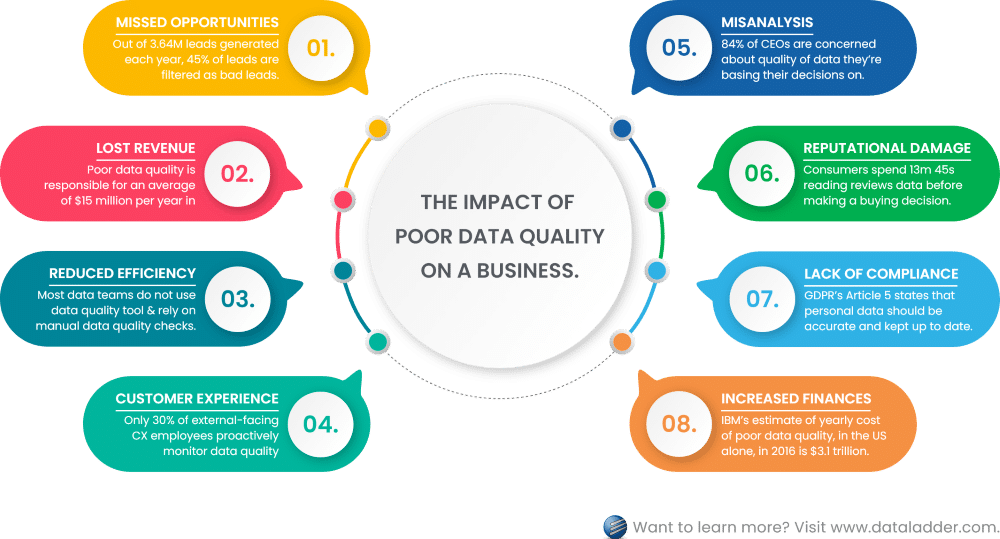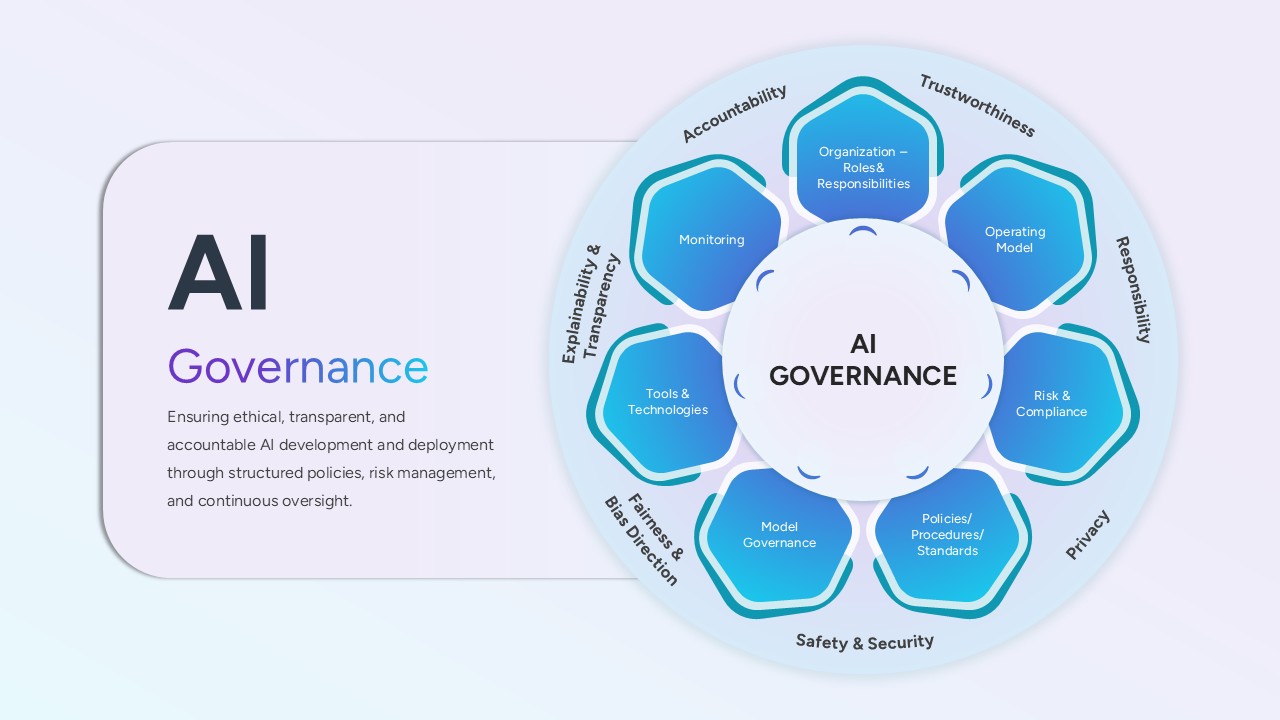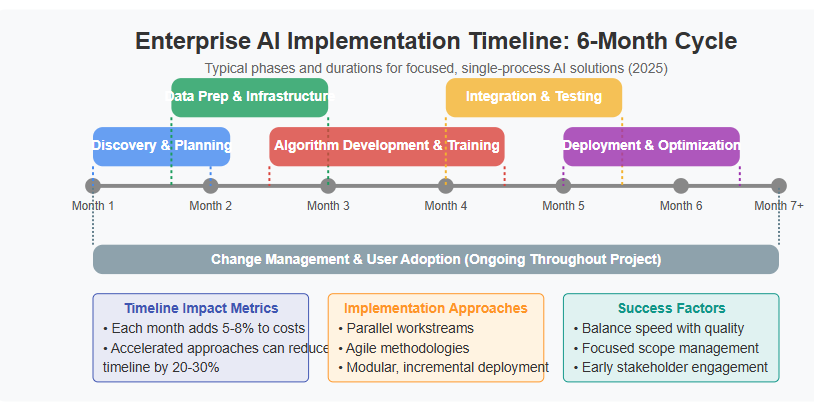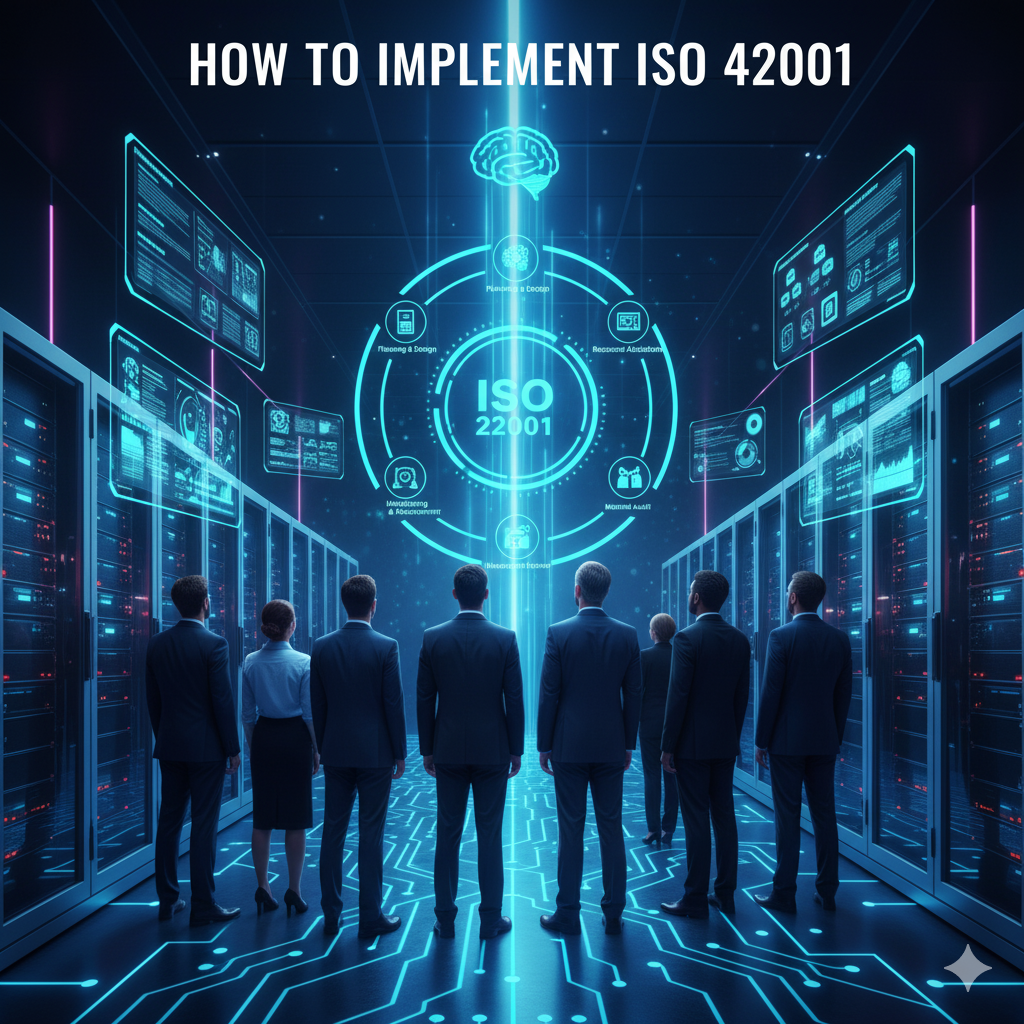Artificial intelligence for procurement refers to computer systems that automate and enhance purchasing decisions, supplier management, and spend analysis throughout an organization’s buying process.
Modern procurement teams face mounting pressure to reduce costs while managing complex global supply chains. Traditional manual processes struggle to handle the volume and complexity of today’s purchasing decisions. Procurement organizations process millions of transactions annually across thousands of suppliers, creating information flows that exceed human analytical capacity.
AI technologies offer solutions to these challenges by processing vast amounts of procurement data in real-time. Machine learning algorithms can identify spending patterns, predict supplier risks, and optimize purchasing decisions at scales impossible through manual analysis. Natural language processing extracts insights from contracts and supplier communications that previously required extensive human review.

Source: LeewayHertz
What AI Technologies Power Modern Procurement
Machine learning forms the foundation of most procurement AI applications. These systems analyze historical purchasing data to identify patterns and make predictions about future needs. Machine learning excels at tasks like spend classification, where algorithms examine transaction descriptions and automatically categorize purchases according to standardized systems.
Natural language processing enables computers to understand and analyze text-based procurement documents. Contract management systems use this technology to extract key terms from agreements, identify renewal dates, and flag potentially problematic language. The technology also helps match purchase requisitions to appropriate suppliers based on capability descriptions.
Robotic process automation handles repetitive procurement tasks without human intervention. Invoice processing represents a common application where systems extract data from documents, match information to purchase orders, and route approvals through workflow systems. These automated processes reduce cycle times and free procurement staff for strategic work, similar to how AI agents in sales automate lead qualification and follow-up activities.
How Machine Learning Transforms Spend Analysis
Traditional spend analysis required weeks of manual data collection and categorization. AI-powered platforms automatically process millions of transactions with accuracy rates exceeding 70 percent, according to industry research. The algorithms continuously learn from new data, improving accuracy over time and adapting to changing business conditions.

Source: ResearchGate
Machine learning algorithms examine spending records, supplier performance data, and market conditions to identify relationships between different variables. Demand forecasting models predict future purchasing needs based on historical consumption patterns, seasonal trends, and business growth projections. The algorithms consider multiple factors simultaneously, including sales forecasts, inventory levels, and supplier lead times.
Automated spend categorization uses algorithms to classify purchases into standardized categories by analyzing transaction descriptions, supplier information, and historical classification patterns. The system learns from procurement team corrections to improve accuracy over time.
Natural Language Processing for Contract Intelligence
Natural language processing technology enables computers to read and interpret contract language written in human text. These systems extract specific information from legal documents, including payment terms, delivery requirements, and liability clauses without human intervention.
Contract risk identification involves scanning agreements for language that creates potential legal or financial exposure. NLP algorithms recognize patterns associated with unfavorable terms and highlight clauses that deviate from standard organizational policies. This automated review process identifies issues that human reviewers might miss due to time constraints or document complexity.
Compliance monitoring systems use natural language processing to compare contract terms against regulatory requirements and internal policies. The technology identifies contracts that may violate procurement guidelines or lack required protective language, enabling proactive correction before problems arise.
Essential AI Applications Across Procurement Functions
Spend analysis has transformed from periodic reporting to continuous intelligence generation through AI automation. AI-powered platforms automatically cleanse transaction data and classify millions of purchases with accuracy rates exceeding 70 percent, revealing spending patterns that manual analysis would take weeks to uncover.
Supplier sourcing benefits significantly from AI-enhanced discovery and evaluation processes. AI systems can analyze vast databases of supplier information to identify optimal candidates for specific sourcing events in minutes rather than weeks. Machine learning algorithms evaluate suppliers against multiple criteria including cost, quality, delivery performance, and strategic fit.
Contract lifecycle management uses natural language processing to extract intelligence from legal documents. AI systems can analyze thousands of contracts to identify key terms, renewal dates, and compliance requirements that previously required manual review.
Automated Invoice Processing and Accounts Payable
Invoice processing automation represents one of the most mature AI applications in procurement operations. Optical character recognition combined with machine learning achieves invoice data extraction accuracy rates exceeding 90 percent. AI-powered matching algorithms resolve common discrepancies between invoices and purchase orders without human intervention.
The technology processes invoices in multiple formats, from PDF documents to scanned paper receipts. Machine learning algorithms learn to recognize vendor-specific invoice layouts and extract relevant data fields automatically. Exception handling routes complex cases to human reviewers while processing routine invoices completely automatically.
Three-way matching becomes automated as AI systems compare invoices against purchase orders and receiving records. The algorithms identify discrepancies in quantities, prices, or terms and route exceptions to appropriate personnel for resolution.
Intelligent Supplier Risk Management
AI monitors supplier performance and financial health continuously by analyzing data from multiple sources including payment records, delivery tracking, quality reports, and external financial databases. Traditional supplier assessments happened quarterly or annually, leaving organizations vulnerable to problems that developed between review cycles.
Real-time risk detection capabilities allow AI systems to identify warning signals such as declining financial metrics, negative news coverage, or delivery performance deterioration before these issues impact operations. When AI detects concerning patterns, it alerts procurement teams to investigate and potentially activate backup suppliers.
Supply chain disruption prevention improves through AI analysis of external factors including weather patterns, political developments, economic indicators, and industry trends that might affect supplier operations. This analysis enables proactive response to potential disruptions rather than reactive crisis management.
Implementation Strategy for AI Procurement Success
Successful AI implementation begins with comprehensive assessment of organizational readiness. Data quality represents the most frequently cited barrier to procurement AI success according to industry surveys. Poor data quality includes incomplete records, inconsistent formats, duplicate entries, and outdated information that undermines AI system effectiveness.
Organizations typically start with pilot programs that test AI capabilities in controlled environments before enterprise-wide deployment. Well-designed pilots have clear scope boundaries, defined success metrics, and predetermined criteria for broader implementation decisions.
Integration planning addresses how AI solutions connect with existing procurement systems and data sources. Most organizations operate multiple systems including ERP platforms, sourcing tools, and contract management applications that must exchange data effectively.
Assessing Your Data Quality Foundation
Data quality assessment examines the completeness, accuracy, and accessibility of procurement information across your systems. AI systems require clean, consistent data to function effectively. The evaluation identifies issues that could undermine AI performance:
- Missing critical fields — Transaction records lacking supplier information, purchase categories, or approval data
- Inconsistent naming conventions — Multiple variations of the same supplier name across different systems
- Duplicate entries — Redundant records created through system integration errors or manual data entry
- Outdated information — Supplier contacts, pricing, or contract terms that no longer reflect current relationships

Source: Data Ladder
Data standardization establishes common formats and definitions across systems. Supplier names, product categories, and transaction codes follow consistent rules to enable accurate AI analysis. Industry standards like the United Nations Standard Products and Services Code provide frameworks for categorizing purchases.
Master data management consolidates information about entities like suppliers, products, and contracts that appear across multiple systems. Organizations often discover dozens of records for major suppliers created independently by different departments.
Building Your Implementation Timeline
AI transformation in procurement typically requires six to eighteen months to achieve meaningful results according to McKinsey research. Organizations achieve better outcomes through phased approaches that build capabilities progressively rather than attempting comprehensive transformation immediately.

Source: AI Development Services
The assessment phase involves evaluating current state capabilities, identifying high-value use cases, and establishing technical and organizational readiness. Organizations inventory existing procurement processes, technology systems, and data quality while conducting stakeholder interviews to understand pain points and priorities.
Pilot program design enables validation of AI capabilities in controlled environments before enterprise-wide rollout. Pilot duration typically ranges from 30 to 90 days depending on the specific use case. Early wins help demonstrate value and build momentum for sustained transformation efforts.
Choosing the Right AI Procurement Tools
Organizations face hundreds of AI procurement software options, from comprehensive enterprise platforms to specialized point solutions targeting specific functions. Understanding the tool landscape helps procurement leaders evaluate options systematically and select solutions that align with their operational requirements.
The procurement software market divides into three primary categories: enterprise platforms that integrate multiple AI capabilities, specialized applications focusing on specific functions, and hybrid solutions combining broad functionality with deep expertise in particular areas.
Tool evaluation requires assessing capabilities against current pain points while considering future requirements as AI implementations expand. Organizations often begin with point solutions addressing immediate challenges, then consolidate toward platforms as their AI sophistication grows.
Enterprise AI Procurement Platforms
Enterprise platforms provide integrated AI capabilities spanning strategic sourcing, contract management, supplier relationship management, spend analytics, and procure-to-pay processes within unified architectures. These comprehensive suites eliminate data silos that fragment procurement intelligence when organizations operate multiple disconnected systems.
Leading enterprise platforms include Oracle Fusion Cloud Procurement, SAP Ariba, Coupa, and GEP SMART, each offering AI features integrated throughout their procurement modules. Oracle incorporates machine learning for demand forecasting, spend classification, and supplier risk assessment. SAP Ariba applies AI to guided buying, contract analysis, and supplier discovery.
Source: LinkedIn
Platform selection involves comparing AI capabilities across key functional areas. Spend analytics AI features include automated data cleansing, intelligent categorization, opportunity identification, and predictive insights. Sourcing AI capabilities encompass supplier discovery, bid analysis, negotiation support, and award optimization.
Integration depth varies significantly across platforms. Some vendors retrofit AI features onto existing architectures, creating inconsistent user experiences and limited cross-functional intelligence. Others redesign platforms around AI capabilities, enabling seamless data flow and unified insights across procurement processes.
Specialized AI Applications by Function
Specialized AI applications focus on specific procurement functions, offering deep functionality within particular domains while requiring integration with broader procurement ecosystems. Organizations often select specialized tools when existing platforms lack sufficient AI sophistication in critical areas.
Spend Analytics and Intelligence:
- Zycus iAnalyze — Applies machine learning to spend data cleansing, category management, and savings opportunity identification
- Rosslyn Analytics — Uses AI for spend visibility, compliance monitoring, and procurement performance optimization
- Predictive analytics tools — Forecast spending trends, price volatility, and demand patterns using historical consumption data
Contract Lifecycle Management:
- Icertis Contract Intelligence — Extracts contract terms, monitors compliance obligations, and identifies renewal opportunities using natural language processing
- Agiloft — Applies AI to contract authoring, approval routing, and risk assessment across contract portfolios
- LawGeex — Automates contract review and approval for routine agreements using machine learning trained on legal documents
Supplier Risk Management:
- Risk monitoring platforms — Analyze financial stability, operational performance, and compliance status using both internal and external data sources
- ESG monitoring tools — Assess supplier sustainability and social responsibility practices through automated analysis of public information
- Geopolitical risk systems — Track regulatory changes, trade restrictions, and political developments affecting supplier relationships
Overcoming Common AI Implementation Challenges
AI implementation in organizations fails more often from poor planning and execution than from technical limitations. The most frequent challenges fall into four categories: data problems, human resistance, technical integration difficulties, and insufficient executive support.
Data quality problems manifest in multiple ways. Missing fields in transaction records prevent AI from understanding complete purchase patterns. Inconsistent naming conventions make it impossible for systems to recognize that different variations refer to the same supplier. Duplicate entries from system integration errors create artificial inflation of certain suppliers’ transaction volumes.
Organizations address data quality through both automated and manual approaches. AI-powered data cleansing tools can standardize supplier names, detect price anomalies that suggest data entry errors, and identify missing information that needs collection.
Managing Change and User Adoption
Procurement professionals often resist AI implementations due to concerns about job security, workflow disruption, and loss of control over decision-making. Successful change management addresses these concerns through communication, training, and inclusive design approaches.
Communication strategies begin early and continue throughout implementation. Clear messaging explains why the organization is investing in AI, what problems it will solve, and how roles will evolve rather than disappear. Honest acknowledgment that AI will automate certain tasks builds trust, while emphasis on how automation enables focus on strategic work helps people envision positive futures.
Training programs address varying levels of technical comfort and experience:
- Basic AI literacy — Helps procurement teams understand what AI can and cannot do, reducing unrealistic expectations and inappropriate fears
- Hands-on system training — Teaches specific workflows and best practices for interpreting AI recommendations
- Advanced training for power users — Covers system administration and performance monitoring
Inclusive design involves procurement professionals in defining requirements and evaluating solutions rather than imposing technology decisions from above. User feedback during pilot phases identifies workflow issues and improvement opportunities before enterprise deployment.
Solving Integration and Technical Hurdles
Technical integration challenges frequently prevent AI solutions from accessing the data they need or sharing insights effectively with other systems. Most organizations operate complex technology environments with multiple platforms that must work together for AI to function properly.
Legacy system compatibility represents a common obstacle when older ERP or procurement platforms use outdated data formats or communication protocols. Modern AI solutions typically expect RESTful APIs and cloud-based data exchange, while legacy systems may require custom adapters or middleware to enable connection.
API connectivity enables AI systems to exchange data with procurement platforms, supplier portals, and analytics tools. However, API implementations vary in quality and capability across vendors. Some provide comprehensive data access while others expose only limited information.
Cloud infrastructure provides scalability for AI workloads that can vary significantly over time. Month-end processing peaks or major sourcing events can overwhelm on-premise systems not designed for AI computational demands.
Building Your AI Procurement Governance Framework

Source: SlideBazaar
AI governance frameworks provide the foundation for responsible AI deployment while managing risks related to bias, privacy, security, and regulatory compliance. The National Institute of Standards and Technology AI Risk Management Framework emphasizes that AI systems should be valid, reliable, safe, secure, accountable, transparent, explainable, privacy-enhanced, and fair with harmful biases managed.
Ethical guidelines address algorithmic bias, transparency, and fairness in AI-driven procurement decisions. Bias can enter AI systems through training data reflecting historical discrimination, algorithm design choices favoring certain characteristics, or deployment contexts creating disparate impacts.
Performance monitoring establishes ongoing assessment of deployed AI systems to ensure continued effectiveness and reliability. Organizations track key performance indicators relevant to business purposes, document baseline performance for comparison over time, and conduct regular performance reviews.
Establishing Transparency and Accountability Standards
Transparency requirements ensure procurement professionals and stakeholders understand how AI systems reach conclusions and recommendations. Documentation clearly describes data sources, algorithm architectures, validation testing performed, known limitations, and appropriate use cases.
User interfaces provide explanatory information highlighting key factors driving AI recommendations rather than displaying unexplained scores or rankings. This transparency helps procurement professionals understand when to trust AI recommendations and when to apply human judgment.
Accountability mechanisms maintain appropriate human involvement in AI-driven procurement decisions. Organizations define circumstances requiring human review, establish escalation procedures for challenging AI recommendations, and maintain capabilities to override AI outputs when warranted.
Data governance frameworks establish policies for collecting, storing, protecting, and using procurement data in AI systems. These frameworks address data quality standards, access controls, retention policies, and privacy protection requirements while ensuring compliance with regulations like GDPR.
Frequently Asked Questions About AI Procurement Implementation
How long does it take to see results from AI procurement tools?
Simple automation projects like invoice processing or spend classification often show results in three to six months. Complex implementations involving supplier risk monitoring or autonomous negotiation systems require more extensive planning and testing, typically taking six to twelve months for meaningful results.
Organizations achieve positive ROI within the first year through cost savings and efficiency gains. Long-term value compounds as AI systems learn and improve their accuracy over time.

Source: HYPEStudio
What data quality standards do AI procurement systems require?
AI systems need complete transaction records with consistent supplier names, accurate purchase categories, and proper approval documentation. Missing critical fields prevent AI from understanding complete purchase patterns, while inconsistent naming conventions make it impossible for systems to recognize duplicate suppliers.
Data standardization establishes common formats across systems using industry standards like the United Nations Standard Products and Services Code for categorizing purchases. Organizations typically achieve 70 percent classification accuracy with clean data, improving over time as algorithms learn from corrections.
Can AI procurement tools integrate with existing ERP systems?
Most AI procurement solutions integrate with existing ERP and procurement systems through standard interfaces called APIs. Modern AI platforms connect through RESTful APIs that exchange data between systems without requiring complete system replacement.
Cloud-based AI solutions offer particularly flexible integration options. Organizations can add AI capabilities to their current procurement stack while maintaining existing system investments and user training. Legacy systems may require custom adapters or middleware to enable connection with modern AI platforms.
What skills do procurement teams need to use AI tools effectively?
Procurement professionals benefit from understanding how to interpret AI recommendations and identify when human judgment remains necessary. Basic familiarity with data analysis concepts helps teams evaluate AI outputs effectively and recognize when results seem inconsistent or unrealistic.
Technical roles require skills in system administration and integration management. Organizations often partner with IT teams or external consultants for initial setup while building internal capabilities over time through training programs and vendor support.
What compliance requirements apply to AI procurement systems?
AI governance requirements vary by industry and jurisdiction but increasingly include AI-specific regulations. The European Union AI Act creates risk-based compliance obligations that scale with AI system risk levels, while other regions develop their own frameworks.
Organizations operating internationally must navigate varying regulatory landscapes across jurisdictions. Procurement policies require transparency regarding AI model architectures, bias testing protocols, data handling practices, and security controls to ensure compliance with applicable regulations.
AI procurement implementation requires systematic planning, proper data preparation, and sustained commitment to organizational change. Organizations that approach AI strategically position themselves to achieve significant competitive advantages through enhanced efficiency, improved decision-making, and stronger supplier relationships while maintaining ethical standards and regulatory compliance.


